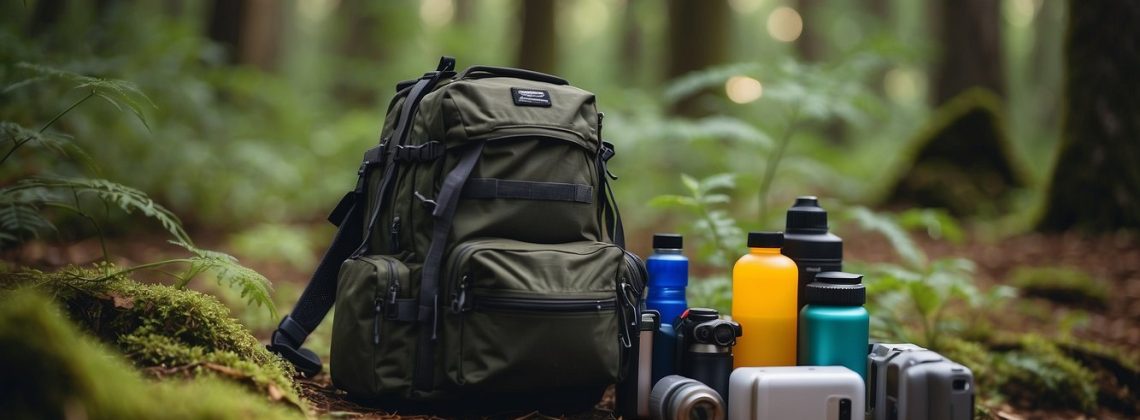
In an unpredictable world, the concept of being prepared for emergency situations has gained increasing attention. A premade bug out bag is a practical solution for those who wish to have a readily available kit to grab at a moment’s notice in the event of an emergency. It typically includes essentials such as water, food rations, a first aid kit, and various survival tools. These bags are designed for individuals to survive a minimum of 72 hours away from home in the aftermath of a sudden crisis.
However, while a premade bug out bag offers the convenience of being quick to obtain and easy to store, it also comes with limitations. The contents might not be customized to individual or regional needs, which can be critical in survival scenarios. There’s also the consideration of the quality and reliability of the pre-selected items, as well as the cost-benefit analysis of purchasing a ready-made kit versus assembling one’s own. Furthermore, one must consider the size and weight of the bag, as it needs to be portable and manageable during an evacuation.
Key Takeaways
- A premade bug out bag provides essential items needed for immediate evacuation during emergencies.
- Limitations include lack of customization and potential quality concerns of the included items.
- Assessing the practicality of the bag’s size and weight is crucial for effective mobility in crisis situations.
Understanding a Bug Out Bag
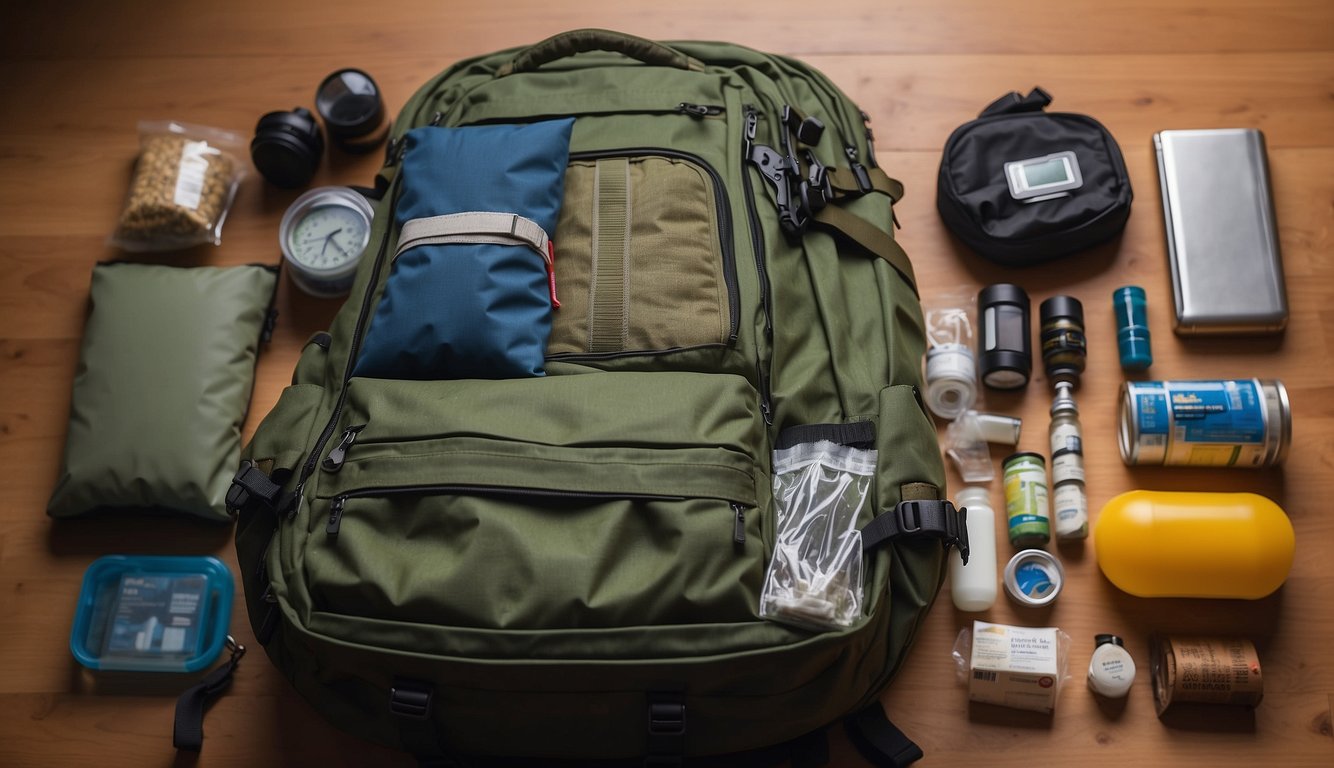
When preparing for any emergency, the core of your readiness is a well-equipped bug out bag. This portable kit ensures you have the necessary items to survive for the initial 72 hours of a crisis.
Essentials of a Bug Out Bag
Your bug out bag should have all the essential survival gear for a variety of emergencies. The cornerstone of your kit is the first aid kit, which covers medical emergencies and basic health needs. You’ll also need a fire starter and a flashlight for warmth and visibility, respectively. Do not forget about shelter; a lightweight tent or an emergency blanket can protect you from the elements.
- First Aid Kit: bandages, antiseptic wipes, medical tools.
- Fire Starter: matches, lighters, ferro rods.
- Flashlight: with extra batteries or a hand-crank option.
- Shelter: compact tents, space-saving emergency blankets.
Variety of Bug Out Bag Contents
The contents of your bug out bag extend beyond the basics into utilities that cater to specific situations. Paracord, with its multiple uses, and duct tape, for various repairs, are versatile tools crucial for survival. Protection elements are vital; hence, goggles to safeguard your eyes, and a compass for navigation should be included.
- Tools: Paracord (at least 50 ft), duct tape.
- Protection: Goggles (chemical splash or dust protection).
- Navigation: Compass, localized maps.
Remember, communication can be vital, so incorporate a battery-powered or hand-crank radio to stay informed during emergencies. In terms of emergency evacuation, strategize your kit to be lightweight yet comprehensive, ensuring you can move quickly and efficiently when it matters most.
Premade Bug Out Bag Overview
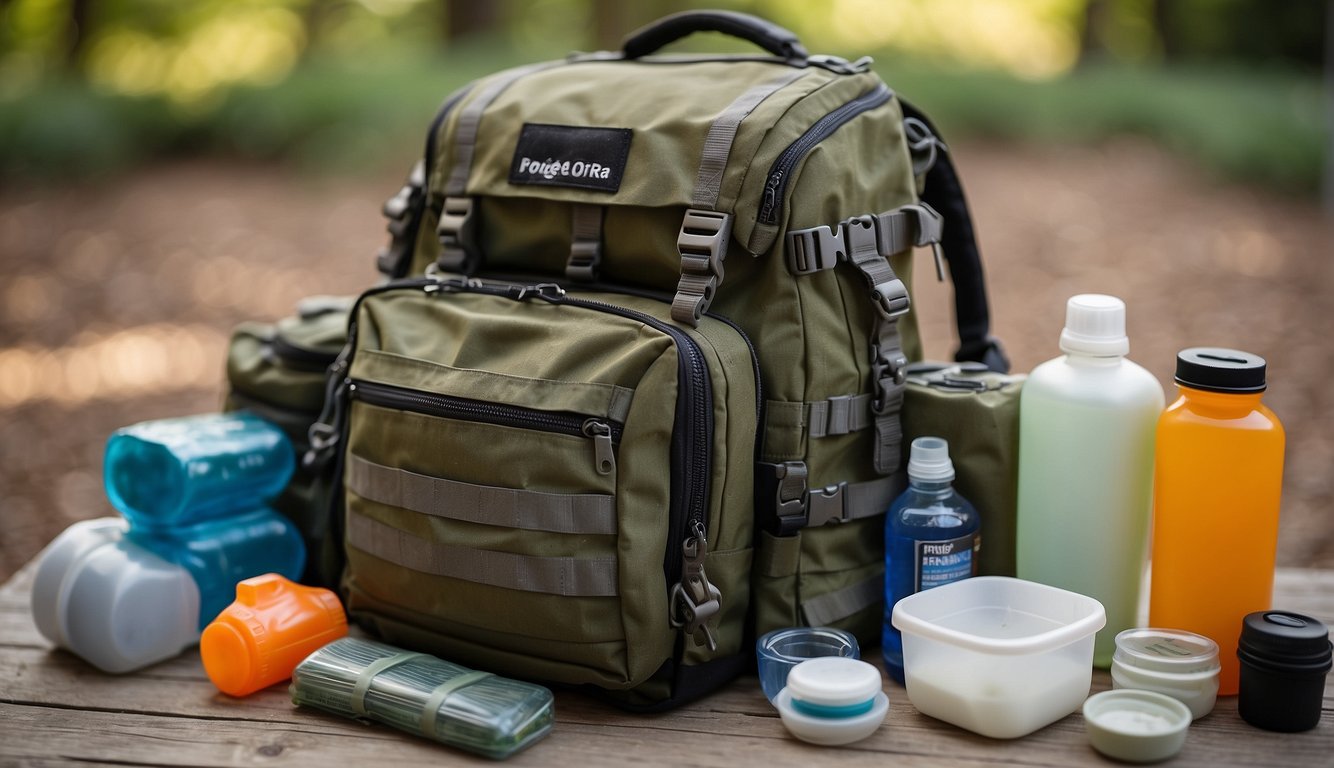
When you consider emergency preparedness, a premade bug out bag offers a convenient option to ensure you’re ready for any crisis.
Definition and Purpose
A premade bug out bag is a portable kit that contains the items one would require to survive for 72 hours when evacuating from a disaster. The purpose of these bags is to provide a quick and efficient means to carry essential supplies during an emergency situation.
Common Features of Premade Bags
Most premade bug out bags come equipped with a set of standardized features designed for survival scenarios:
- Essentials: Water purification methods, food rations, first-aid kit.
- Tools: Multipurpose tools, flashlights, fire starters.
- Protection: Weather-appropriate clothing, emergency blankets, ponchos.
| Item | Purpose |
|---|---|
| Water Filter | To provide clean drinking water |
| Food Rations | To maintain energy levels |
| First-Aid Kit | To address minor injuries |
| Multipurpose Tool | To assist in various tasks and repairs |
| Flashlight | To navigate in the dark |
| Fire Starter | To create fire for warmth or signal for help |
| Clothing | To protect against the elements |
| Emergency Blanket | To maintain body heat in cold situations |
In your search for the best premade bug out bag, consider one that fits your personal needs, taking into account the quality and quantity of the items included, as these can vary between kits.
Pros of Premade Bug Out Bags
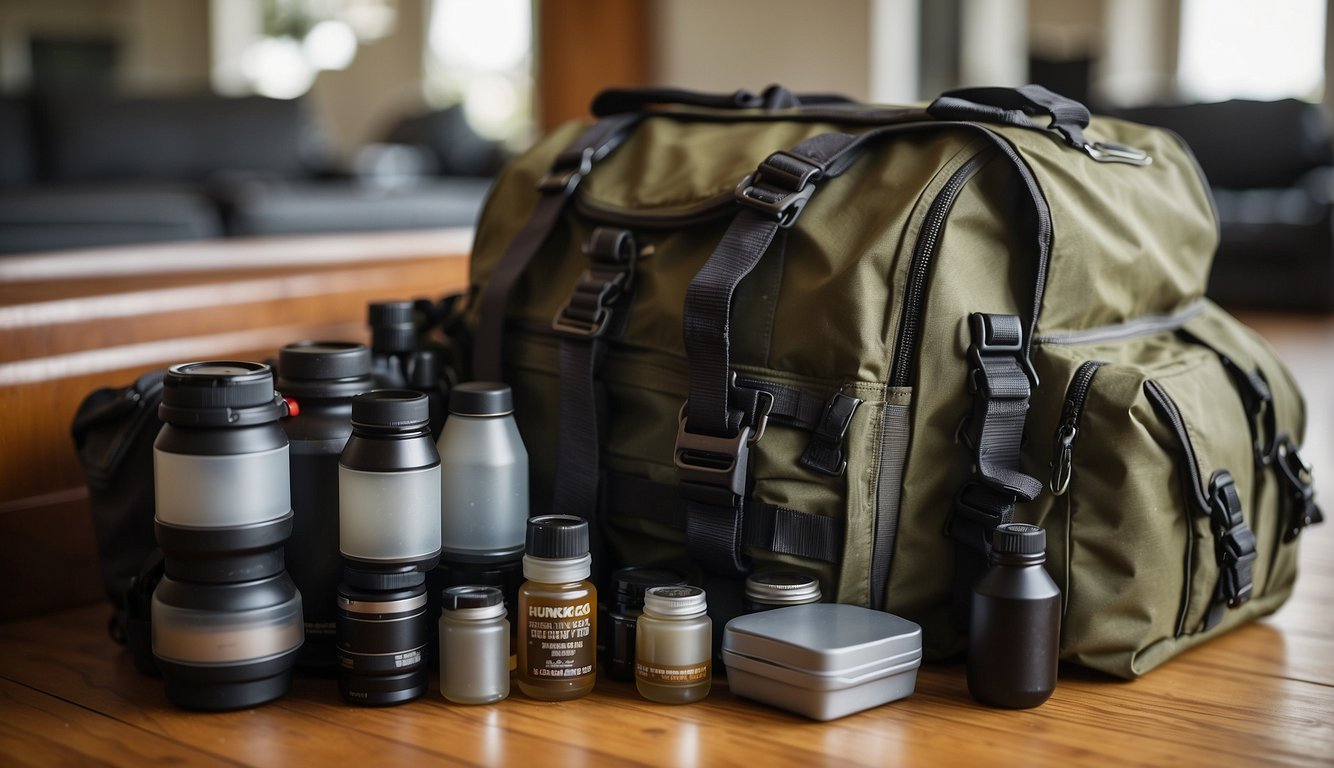
When it comes to emergency preparedness, a premade bug out bag offers significant advantages. The following subsections detail how these bags deliver on convenience, quality, and readiness.
Time-Saving Convenience
Your time is valuable, and a premade bug out bag saves you hours of research and shopping. Each bag is designed to maximize convenience, providing a turnkey solution when time is of the essence.
- Quick acquisition: No need for item-by-item selection.
- Immediate availability: Grab and go without the hassle of assembling your own.
Expert-Selected Items
Premade bug out bags give you the benefit of expertise. Preparedness specialists with knowledge in survival scenarios carefully select the contents. This ensures that each item serves a crucial purpose during emergencies.
- Curated selection: Items included are tailored to meet survival needs, removing guesswork.
- Quality assured: Reliable and tested products, vetted by professionals.
Ready for Immediate Use
In an emergency, immediacy can be the difference between safety and peril. With a premade bug out bag, you have a resource that’s ready for immediate use.
- No setup required: Bags are packed and structured for instant deployment.
- Emergency preparedness guidebook: Key instructions and information at your disposal.
Diversified Survival Items
A wide range of survival items in a single package enhances your readiness for various emergency conditions. Premade bags cover diverse needs from first aid to sustenance and shelter.
- Essential variety: The right mix of items to address different survival situations.
- Balanced pack: Carefully weighted to ensure you can carry essential gear without being overburdened.
Cons of Premade Bug Out Bags
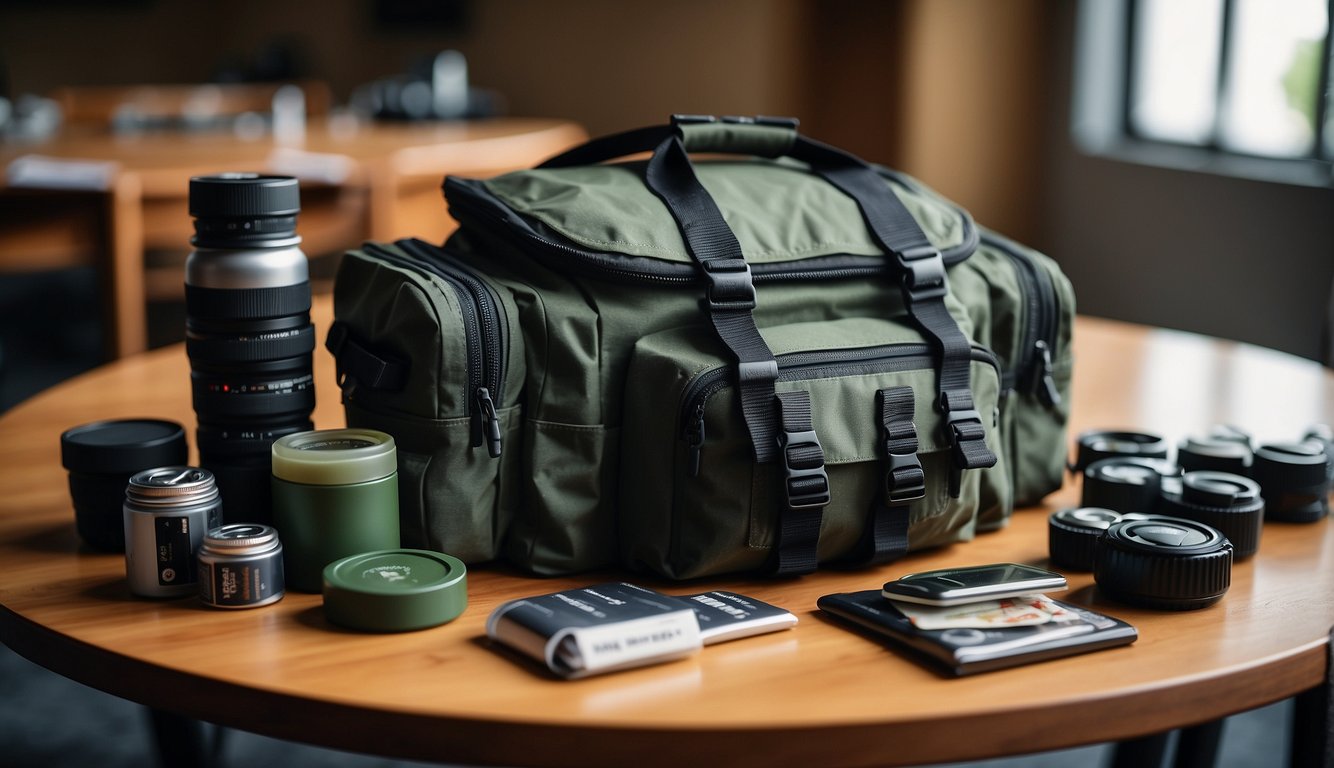
Premade bug out bags offer convenience, but they come with limitations that you should consider. The one-size-fits-all contents may not meet your specific needs and the costs can sometimes be higher compared to assembling your own kit.
Cost Considerations
When you purchase a premade bug out bag, you are often paying for the convenience factor. The price of these bags typically includes a markup for assembly and branding. Additionally, while you might find a range of prices from economical to high-end options, you should scrutinize the value of the contents relative to the money spent. It’s not uncommon to pay a premium for items that, if sourced separately, could be more affordable.
- More Affordable: Individual items purchased separately.
- Premium: Assembled premade bug out bags.
Generic Item Selection
The items included in a premade bug out bag are chosen to suit a general audience. This means that they may contain unnecessary items that are not relevant to your geographic location or personal situation. For example, a bag could include heavy winter gear that would not be needed in tropical climates. Conversely, they might lack items you deem essential. Furthermore, unlike a personalized survival kit service, premade bags do not account for personal preferences or unique needs, which can be critical in survival situations.
- Unnecessary Items: Items not tailored to individual needs or location.
- Personalized Kit: Tailored selection specific to one’s requirements.
Customization and Personal Needs
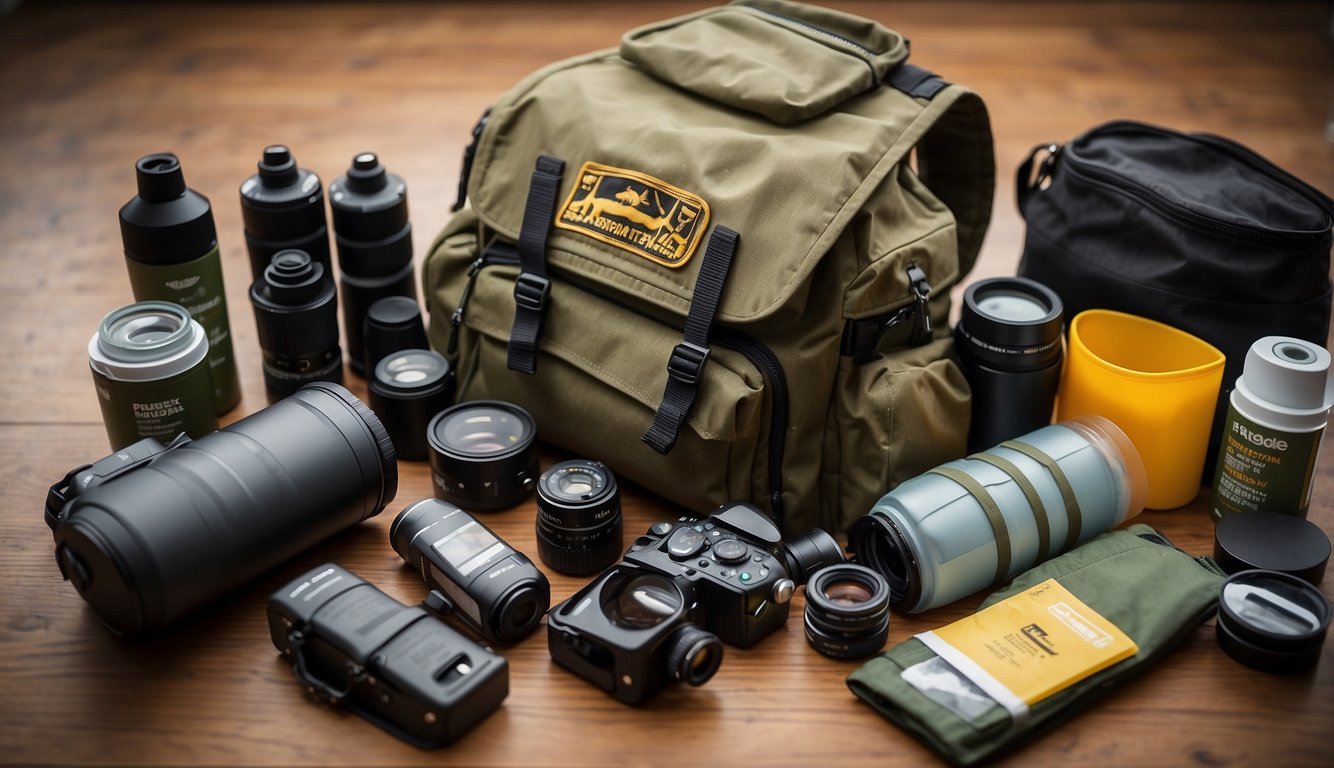
When considering a premade bug out bag, you should weigh how well it can be customized and whether it caters to your individual needs. Essentials matter, but so does the ability to personalize your kit.
Tailoring to Individual Preferences
Every person has unique requirements and preferences, which means that a one-size-fits-all approach to a premade bug out bag may not be ideal for you. The essentials such as food, water filtration, and shelter will be included, but the specifics might not match your personal choices. For instance, food options could range from vegetarian to gluten-free, and you may prefer one over the other based on dietary needs.
- Clothing: Depending on your climate and environment, you may need to add or replace clothing items to maintain comfort and protection.
- Gear Preferences: You might favor a particular brand or type of gear, such as a multitool or flashlight, that isn’t included in a standard premade bag.
Inclusion of Personal Items
In addition to survival essentials, personal items are critical for prolonged resilience in an emergency situation. These might include medications, which are vital for your health and cannot always be found in a generic bug out bag. Personal documents and items of sentimental value are also an important part of your personalized survival kit.
| Personal Needs | Items to Include |
|---|---|
| Medical | Prescription medications, personalized first aid kit |
| Comfort | Photos of loved ones, small keepsake |
| Identity | Copies of personal identification, important documents |
In summary, a premade bug out bag covers the basics but might lack the personalized elements to meet your specific needs. Consider a personalized survival kit service to ensure that your bag is tailored to your preferences and includes all essential items unique to your situation.
Evaluating Premade Bug Out Bags
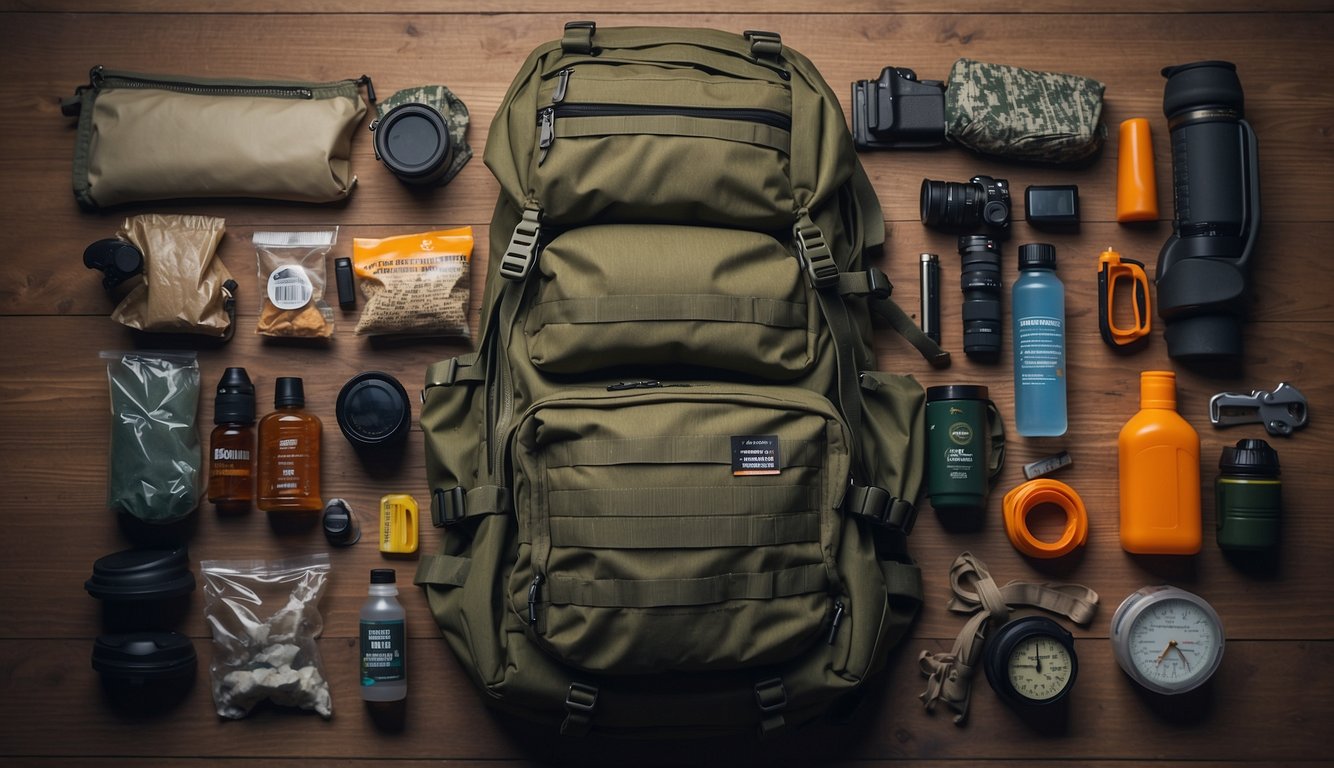
When considering a premade bug out bag, it’s critical to assess its features against your specific needs. Decisions should be informed by both the tangible attributes of the bag and the experiences of others who have used it.
Key Factors in Decision-Making
Your decision should hinge on several key aspects. Durability and comfort are non-negotiable; you need a bag that can withstand harsh conditions and is comfortable to carry. Weight is also a primary concern since a heavy bag could slow you down in an emergency.
- Features: Look for bags with multiple compartments, hydration bladders, and molle compatibility.
- Storage: Ample space is vital for essential gear, but too much can make the bag bulky.
- Organization: Internal pockets and dividers should allow easy access and prevent disarray.
Affordability is another critical factor. While cost should not trump quality, it is essential to find a balanced option that provides value for money without compromising on critical features.
Analyzing Reviews and Feedback
To gauge real-world performance, scrutinize user reviews.
- Pay close attention to reports on:
- Stitching & Material: They indicate durability.
- Strap Comfort: Important for prolonged use.
- Zippers & Closures: Ensure they are robust and reliable.
Take note of any recurring praise or complaints, as these are strong indicators of the bag’s overall performance and value.
Physical and Practical Considerations
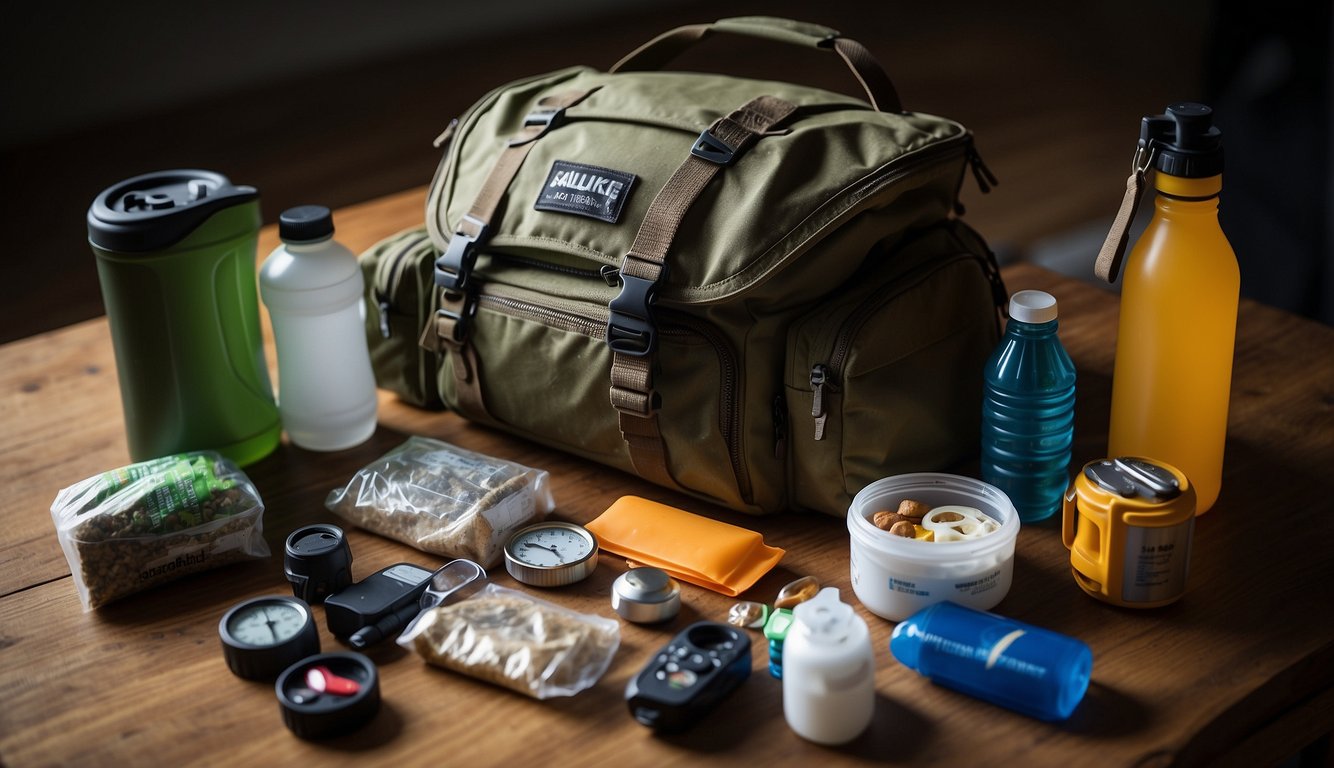
When you choose a premade bug out bag, it’s essential to consider how it will affect your mobility and readiness. The right balance of size, weight, and organization will ensure you can move quickly and have easy access to your essentials in an emergency.
Size and Weight Balance
Your bug out bag needs to be large enough to hold all necessary equipment yet light enough for you to carry comfortably over distances. Size corresponds to the volume of supplies you can carry, while weight is a critical factor in your endurance and speed. A heavy backpack will slow you down and can lead to fatigue or injury.
- Balance: Aim for a bag that provides a harmonious balance between size and weight.
- Optimal size and weight depend on your physical capabilities and the duration you need to be self-sufficient.
Comfort and Accessibility
The design of your backpack affects your overall comfort and how quickly you can access your gear. Padding in the right places, such as on the straps and back panel, can greatly increase comfort. Ergonomic designs that distribute weight evenly help prevent strain.
- Quick-access pockets: For items you need to reach frequently.
- Adjustable straps: Ensure a snug fit to avoid strain on your shoulders and hips.
Storage and Organization
A well-organized bag is crucial for access to items and for making the most of the available space. Look for bags with multiple compartments, which offer better organization and make it easier to find items quickly. Waterproof compartments can protect sensitive items like documents and electronics.
- Storage: Seek options with modular storage or internal dividers to keep supplies orderly.
- MOLLE systems (Modular Lightweight Load-carrying Equipment) or similar attachment points can enhance the bag’s functionality by adding or removing pouches as needed.
Survival Preparedness

In the domain of survival, preparedness is both an asset and a necessity. The right premade bug out bag can set you on a path to efficiently handle emergencies.
Training and Knowledge
Your survival is greatly enhanced by your level of training and knowledge. An adept understanding of survival techniques is crucial.
- Understand Usage: Learn how each item in your bag is used to avoid misuse during critical situations.
- Skill Development: Practice skills like fire-starting, water purification, and shelter-building routinely.
Location and Climate Specifics
Your environment dictates the requirements of your bug out bag. Consider the following:
- Climate Adaptability: Ensure your bag contains gear suitable for temperature and weather conditions of your region.
- Geographical Relevance: Select tools relevant to the terrain you’ll encounter, whether it’s urban, forest, desert, or mountainous.
Demographic Considerations
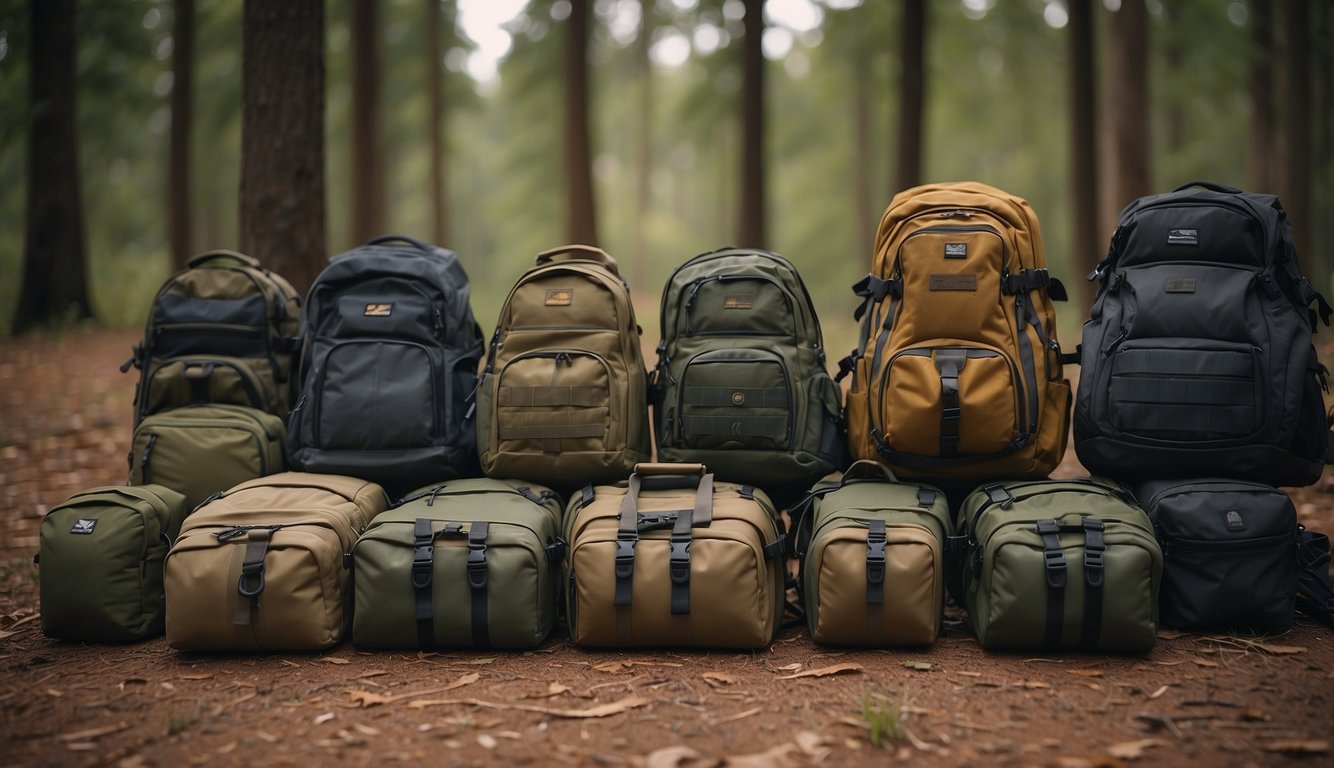
When selecting a premade bug out bag, it’s important to consider the specific needs of the individuals who will use it. Factors such as age and the number of people in your group play a critical role in determining the suitability of the bag’s contents.
Suitability for Kids and Adults
For Kids:
- Contents: Look for bags with child-friendly items, like smaller-sized clothing, age-appropriate medical supplies, and lightweight tools.
- Accessibility: Ensure the bag is manageable for a child to carry, with adjustable straps to fit their smaller frames.
For Adults:
- Contents: Adult bags should include a thorough first aid kit, a more comprehensive toolset, and appropriate food rations.
- Weight: The bag must strike a balance between being lightweight and containing all necessary items for survival.
Adaptation to Number of People
| Number of People | Considerations |
|---|---|
| Single person | A bag tailored to individual use can be more compact and specialized. |
| Family or Group | Bags should have enough supplies for all members or consider multiple bags for distribution of weight and resources. |
- Single Bag Approach: If you opt for one bag for multiple people, make sure that it has enough essentials like water, food, and shelter to sustain your group for at least 72 hours.
- Multiple Bag Approach: For larger groups, having several bags allows for division of supplies and makes carrying easier, with each person responsible for a portion of the collective resources.
Choosing the Best Premade Bug Out Bag
Selecting the best premade bug out bag requires evaluating top brands and ensuring the bag contains essential gear tailored to your survival needs.
Comparing Top Brands
When scrutinizing the top brands, you’ll find reputable names such as Emergency Zone, Sustain Supply Co., the Judy Mover Max, and the Ready America Emergency Kit.
- Emergency Zone offers a balance between affordability and comprehensive contents.
- Sustain Supply Co. is known for its high-quality gear suited for a more prolonged survival period.
- For urban readiness, the Judy Mover Max is compact and well-organized.
- The Ready America Emergency Kit provides basic tools and supplies for immediate emergencies.
Prioritizing Essential Gear
Your bag must have the essential gear to ensure survival. Look for components like:
- Survival Knife: A reliable survival knife should be part of the kit.
- Water and Food Supplies: Minimum 72-hour supply of water and non-perishable food.
- First Aid Items: Comprehensive first aid kit to address minor injuries and illnesses.
- Shelter and Warmth: Items such as emergency blankets and rain ponchos.
By focusing on the essentials and comparing well-known brands, you can choose the best premade bug out bag for your needs.
Accessories and Additional Gear
In premade bug out bags, the right accessories and gear can transform a basic kit into a comprehensive survival solution.
Enhancing Basic Premade Kits
First Aid Supplies: Your bug out bag should include a variety of first aid items to handle medical emergencies. This ranges from plasters and antiseptics to more sophisticated items like tourniquets and hemostatic agents. Periodic updates are necessary to ensure all items remain within their expiration dates.
Food and Water: At the core of your supplies, ensure you have a balance of rations and water. High-energy, long-life food options are advisable, like energy bars and dehydrated meals. For water, include purification tablets or a high-quality filter in addition to water bottles or pouches.
Selecting Additional Survival Equipment
Gadgets for Survival: Items like multi-tools, fire-starters, and solar-powered chargers are critical. Invest in quality gadgets that withstand harsh conditions. Remember, reliability over complexity is key.
Sleep and Shelter: Ensure your sleep system is lightweight yet warm. Consider a compact, insulating sleeping bag rated for various temperatures. For shelter, a durable, weather-resistant tent is indispensable.
Tools for Navigation and Communication: Include a sturdy compass or GPS device for navigation. Additionally, consider solar-powered or hand-cranked radios for access to communication networks.
Remember, the idea is to complement your basic kit with additional gear tailored to your specific needs without overburdening yourself. Every item should serve a distinct, necessary purpose.
Risk Management
When considering a premade bug out bag, your focus on risk management ensures you are prepared for a range of emergency scenarios with reliable equipment, offering you peace of mind.
Emergency Scenarios Planning
Preparing for various emergency situations means anticipating natural disasters such as hurricanes, earthquakes, and floods. Your premade bug out bag should contain essential items tailored to these events:
- Natural Disaster: For hurricanes and earthquakes, strong, compact emergency blankets are crucial to prevent hypothermia.
- Floods: Seeking high ground is imperative; ensure you have regional maps and a planned evacuation route.
These items must be packed considering the likelihood of each scenario you might face.
Investing in Reliability
Reliability in your gear equates to investing in your safety. The components of your premade bag should adhere to high standards:
- Investing: Acquiring a premade bag can be thought of as an investment akin to insurance — mitigating potential risk.
- Emergency Blankets: Ensure they are durable and made of quality materials.
- Emergency Situation: Peace of mind in any crisis comes from knowing your bag’s contents are dependable.
Your bag’s quality will determine its performance when you need it most. Reliable gear helps secure your well-being in unpredictable circumstances.
Technical Aspects and Features
When choosing a premade bug out bag, it’s essential to consider its technical aspects and features. These play a crucial role in the functionality and reliability of your kit during emergencies.
Understanding Molle System
The MOLLE system (Modular Lightweight Load-carrying Equipment) allows for customizable attachment of gear and pouches. Your bug out bag’s MOLLE compatibility means you can tailor it to your specific needs by attaching additional molle-compatible pouches, which may include a hydration compartment for water supply or a filtration mask for clean air in contaminated environments.
- Customization: Easily attach and detach gear
- Expansion: Add extra pouches as needed
Assessing Durability and Material Quality
Durability is paramount for a bug out bag since it must endure rough conditions. High-quality, durable materials like nylon or polyester ensure longevity and protect your supplies. Check for reinforced stitching and robust zippers. Consider these key points:
| Material Features | Benefit |
|---|---|
| Ripstop fabric | Prevents tearing from spreading |
| UV resistance | Protection from sun damage |
| Abrasion resistance | Sustains through rough use |
Waterproofing and Weather Resistance
Weather resistance is not just a feature but a necessity. Your bag should be waterproof or at least come with a rain cover to protect your essentials. Look for waterproof ratings and coated fabrics to keep moisture out. Waterproofing extends beyond the bag itself:
- Sunscreen: Ensure compartments are available to store skin protection.
- Bag Design: Sealed seams and waterproof linings keep your items dry.
Remember, a well-constructed bug out bag with these technical aspects inspected can make a significant difference in any survival situation.
Legal and Travel Implications
Before planning to travel with your premade bug out bag, it’s essential to understand the legal and travel implications. Different regions have varying regulations, and traveling with certain items can be restricted or prohibited. It’s vital to be well-informed to avoid legal complications and travel disruptions.
Regulations and Legalities
- Legal Restrictions: Countries and states have specific rules about what can be carried across their borders. For instance, you may find certain knives or self-defense items in your bug out bag are illegal in some destinations.
| Jurisdiction | Item | Legal Status |
|---|---|---|
| Country A | Firearm | Prohibited |
| Country B | Knife over 3″ | Restricted |
| State C | Pepper Spray | Regulated |
- Transport Modes: Different regulations apply for different modes of travel. While an item may be acceptable in a personal vehicle, it may not be allowed on commercial flights or across international borders.
Conveniences for Mobility and Travel
Bag Size and Weight: Always check the size and weight limitations for carry-on and checked luggage if you’re traveling by air. This will ensure you avoid additional fees or having to leave essential items behind.
- Air Travel: Typically, carry-on luggage must not exceed 22 x 14 x 9 inches and 40 pounds.
- Personal Vehicles: Less restrictive, but space and weight can still impact vehicle performance and fuel efficiency.
- Travel Terms: Be aware of the travel insurance terms and emergency evacuation policies. Some policies may not cover the items in your bug out bag, or they may require additional documentation or permits for travel.
After-Sale Support and Services
When you invest in a premade bug out bag, after-sale support can greatly influence your satisfaction with the purchase. The services provided can help you maintain the bag’s readiness and value.
Warranty and Customer Service
Warranty Coverage: Your bug out bag may come with a limited warranty. It’s important to understand the terms and duration of the warranty to ensure defects or issues are covered. Typically, a warranty lasts from one year to a lifetime, depending on the manufacturer.
Customer Service Accessibility: Having access to responsive customer service is vital. If you encounter any issues with your bag, you should be able to easily reach out and receive guidance or solutions from the company.
Affiliate and Information Resources
Affiliate Support: Some manufacturers partner with affiliates who are knowledgeable about the product. These affiliates can provide additional support and advice, helping you make the most of your bug out bag.
Access to Information: A good after-sale service includes providing you with ample information, such as how-to guides, instructional videos, and maintenance tips. This ensures that you can effectively use and take care of your emergency kit.
Emergency Kit Update Services
Update Services: Over time, products in your bug out bag may expire or become obsolete. Some companies offer update services to replace or upgrade these items, ensuring your kit remains current and fully functional.
Service Subscriptions: You might also find subscription services that periodically send out new supplies or information to help you keep your bag updated. This usually comes at an additional cost but can be beneficial for keeping your kit in top condition.
By understanding the after-sale support and services offered, you can make a well-informed decision on which premade bug out bag to purchase. Ensure that the company provides comprehensive support that matches your expectations for maintaining your emergency preparedness.
Making the Investment
When considering a premade bug out bag, you’re looking at an initial financial outlay in exchange for preparedness and peace of mind. Your investment should be evaluated on cost-effectiveness and the bag’s ability to retain value and require minimal maintenance over time.
Cost-Benefit Analysis
The cost of a premade bug out bag can range significantly, but typically you might expect to spend between $100 to $500. The key here is to analyze what’s included versus buying items separately.
Cost Comparison:
- Premade Bag: $250 (average)
- DIY Bag (itemized total): $300+
Purchasing individual items might seem like a way to save money, but often, the convenience and time saved with a premade option proves financially prudent.
Long-term Value and Maintenance
A premade bug out bag that is robust and contains quality supplies can hold its long-term value.
Maintenance Considerations:
- Expiration Dates: Regularly check and replace expired items.
- Bag Material: Ensure the bag is made of durable, weather-resistant material to avoid frequent replacement.
- Gear Quality: High-quality gear may cost more upfront but will usually last longer, reducing the need for replacements.
The initial investment in a premade bug out bag is not only about the money spent; it’s also an investment in your safety. It’s vital for you to regard the balance between the cost paid today and the potential benefits during an emergency.
Health and Safety
When considering a premade bug out bag, a critical aspect that cannot be overlooked is the health and safety of the individual. Ensuring access to first aid, safe food and water, and maintaining physical fitness are essential components of your preparedness strategy.
First Aid and Emergency Treatment
Your premade bug out bag should include a comprehensive first aid kit containing items such as bandages, antiseptics, and over-the-counter medications to address minor injuries and ailments. It’s essential that you familiarize yourself with the contents of your emergency kit, so you can provide immediate care in an emergency.
- First Aid Supplies Checklist:
- Bandages of various sizes
- Antiseptic wipes and creams
- Pain relievers (e.g., ibuprofen)
- Allergy medication (e.g., antihistamines)
- Tweezers and scissors
- Emergency blanket
Note: Always ensure these supplies are up-to-date and replenished as needed.
Food and Water Safety
When it comes to nutrition, your bug out bag should contain a sufficient supply of non-perishable food rations and water. Choose rations that are high in nutrients and calories to sustain high energy levels. Your bag should also include a hydration compartment or space for water bottles or purifiers ensuring safe drinking water.
- Safe Food and Water Tips:
- Monitor food expiration dates.
- Rotate food supplies to keep them fresh.
- Include water purification methods (tablets, filters).
Physical Fitness and Conditioning
Your own physical condition plays a vital role in managing the stresses of an emergency situation. Exercise regularly to maintain your stamina and strength, which will ensure you can carry your bug out bag and move swiftly when needed.
- Exercise Recommendations:
- Cardiovascular activities (e.g., running, cycling).
- Strength training (e.g., lifting weights, resistance exercises).
Environmental and Social Responsibility
When considering premade bug out bags, you should weigh the environmental impact of their contents and materials against their role in communal safety.
Eco-friendly Materials
Materials: Your bug out bag’s sustainability starts with its materials. Manufacturers who prioritize eco-friendly materials utilize items such as recycled nylon or organic cotton. These choices reduce the ecological footprint in two ways:
- Resource Conservation: Choosing recycled over virgin materials conserves natural resources.
- Waste Reduction: Using biodegradable items ensures that if items are discarded, they will decompose more naturally rather than persisting in landfills.
| Material Type | Environmental Impact |
|---|---|
| Recycled Nylon | Lowers resource demand |
| Organic Cotton | Reduces chemical use |
| Biodegradable Items | Minimizes waste |
Supporting Community Preparedness
Community Training: A responsible bug out bag supplier not only offers a product but also promotes preparedness education. Companies can take part in social responsibility by:
- Offering training sessions on disaster response.
- Distributing informational resources to enhance community resilience.
This fosters a more informed public, which can considerably improve outcomes in emergency situations.
| Community Initiative | Social Impact |
|---|---|
| Training Sessions | Improved readiness |
| Informational Resources | Enhanced resilience |
By choosing a premade bug out bag from a socially responsible provider, you contribute to a culture of preparedness while supporting environmental stewardship.
Conclusion
When considering a premade bug out bag, your decision should be informed by a balance of its advantages and disadvantages:
Advantages:
- Convenience: You save time and effort as contents are pre-selected.
- Speed: Immediate availability for emergencies; no assembly required.
- Expertise: Often curated by professionals with survival experience.
Disadvantages:
- Cost: Typically more expensive than DIY alternatives.
- Generic Contents: May include items unnecessary for your particular needs.
- Lack of Familiarity: You might not be as acquainted with the gear as you would be if you had assembled it yourself.
In your assessment, weigh these factors against your personal needs, skills, and budget to decide if a premade option aligns with your emergency preparedness strategy. Remember, the peace of mind in an emergency often justifies the initial investment in a quality premade bug out bag.
Frequently Asked Questions
In this section, you’ll find information on the most critical aspects of premade bug out bags, how they stand up to different scenarios, and maintenance tips.
What are the essential items to include in a bug out bag?
Your bug out bag should contain essentials such as water, food, first aid supplies, a flashlight, a multi-tool, personal hygiene items, clothing appropriate for the climate, and shelter materials like a tent or thermal blankets.
How does a premade bug out bag compare to a custom-built one in terms of preparedness?
A premade bug out bag offers convenience and covers basic needs, but a custom-built one can be tailored specifically to your personal requirements, regional risks, and may include higher quality or more specialized equipment.
Can a premade bug out bag be relied upon for all disaster scenarios?
While premade bug out bags are designed to be versatile, no single bag can cover all disaster scenarios perfectly. It’s essential to assess the bag’s contents against potential risks in your area and add any specific items needed for those scenarios.
What are the benefits of having a bug out bag readily available at home?
Having a bug out bag ready ensures you can evacuate quickly in an emergency with essential survival items already packed. This immediate accessibility can be crucial when time is critical.
How often should the contents of a bug out bag be reviewed and updated?
You should review and update your bug out bag’s contents at least every six months to ensure all items are functional, have not expired, and remain relevant to seasonal and environmental changes.
In what situations is it advisable to have a bug out bag, and why?
It is advisable to have a bug out bag for situations like natural disasters, power outages, or civil unrest, as it contains supplies that sustain you during an evacuation or while sheltering in place until conditions improve.

Leave a Reply